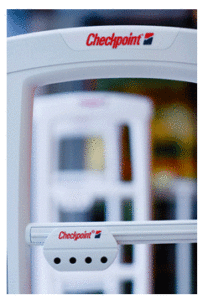
Shoplifting and shoplifters have been a constant reliable problem the retail industry has had for many years. The billions of dollars lost due to shoplifting is not a laughing matter. The millions of dollars the retail industry suffers daily due to shoplifting, cripples local economies and leaves them unable to fund social programs that benefit those communities. The tax loss from stolen merchandise affects those communities as well.
It is very hard to empathize with a shoplifter. Shoplifting is a crime after all but, we must remember that shoplifters have rights and whether security personnel likes it or not they must follow the law. The procedures a security employee must take when apprehending a shoplifter are very clear. Law enforcement personnel must follow procedures as well. Shoplifters have rights, and as a security employee you must follow them.
For more about this and other topics, follow the links below.
LP Interrogation Techniques Can Work as Negotiation Tactics
Negotiation tactics are synonymous with terms ranging from compromise and mediation to haggle and interrogation. It is not difficult to argue the fact that interrogations represent the hardest form of negotiating. When people enter into negotiations or mediations, they understand they may need to sacrifice some of their interests in order to reach a mutual agreement because both parties, at some level, have shared interests.
On the contrary, when subjects enter into loss prevention interrogation, they have no intentions of sacrificing any of their interests. Interrogation subjects are typically motivated to stake themselves to a position of innocence and to vehemently defend that position. Skilled interrogators overcome these obstacles by creating shared interests, reducing their subject’s resistance, and creating perceived benefits for confessing.
Many corporate executives view negotiating tactics and skills as both critical to their success and professional development.
Court rules company extorts money from accused shoplifters
SAN FRANCISCO (KTVU) – A State Superior Court judge has ruled that a “corrective education” scheme for accused shoplifters is considered “extortion.”
San Francisco City Attorney Dennis Herrera filed the lawsuit against Corrective Education Company, which partners with retailers like Walmart, Bloomingdale’s, Burlington Coat Factory, Abercrombie & Fitch, Ralph’s grocery chain and Kroger’s.
Suspected shoplifters at those retailers don’t get handcuffed by police, instead, Herrera says they answer to a private business called CEC or Corrective Education Company.
“They basically would intimidate and get someone they suspected of being a shoplifter and say uh, unless you sign this form and and pay us money, we’re gonna report you to the police,” said Herrera.
The problem with that, Herrera says… it’s illegal.
“The law is clear. This is a textbook case of extortion and false imprisonment,” said Herrera who filed the lawsuit back in November of 2015.
This week, California’s State Superior court agreed.
Burlington Coat Factory Security Guard Arrested After Shooting
A security guard who shot a man Tuesday during a confrontation over an alleged shoplifting incident in San Francisco has been arrested, police said today.
The shooting occurred shortly after 2:30pm in the area of Fifth and Howard streets at a Burlington Coat Factory store where the guard, a 42-year-old man, confronted a suspected shoplifter, according to Officer Robert Rueca.
A struggle ensued that moved outside of the store, and the guard shot the 33-year-old man in the leg, Rueca said.
The victim was taken to a hospital with injuries that are not considered life-threatening.
The guard, whose identity has not yet been released, was arrested on suspicion of assault with a firearm and shooting at an inhabited dwelling.
 How often does it happen? You are in front of your television watching your favorite college football team playing a game and your spouse starts talking to you about their day or what you need from the grocery store. Then suddenly the conversation takes a nasty turn and you are asked for input about the conversation you weren’t really engaged in. The textbook reply, “Yes Dear” or
How often does it happen? You are in front of your television watching your favorite college football team playing a game and your spouse starts talking to you about their day or what you need from the grocery store. Then suddenly the conversation takes a nasty turn and you are asked for input about the conversation you weren’t really engaged in. The textbook reply, “Yes Dear” or Turnover for many businesses can be a real headache. You take the time to post job ads, review job applications, set up interviews and then conduct the interviews. Your new hire starts and within a couple of weeks they quit. It happens far too many times and it is a pain. Why did the person quit? Did they have a propensity for job hopping already and you missed it on the job application? Did they start stealing from you and got enough money or merchandise and quit before you caught on to their schemes? Perhaps it was a young employee on their first job and they wanted more weekends and night shifts off so they could “hang out” with their friends. All of these are reasons for high turnover in retail stores especially. Lose too many people at once and it can cripple your business, stretch the staff you currently have and it may potentially lead to more employees quitting.
Turnover for many businesses can be a real headache. You take the time to post job ads, review job applications, set up interviews and then conduct the interviews. Your new hire starts and within a couple of weeks they quit. It happens far too many times and it is a pain. Why did the person quit? Did they have a propensity for job hopping already and you missed it on the job application? Did they start stealing from you and got enough money or merchandise and quit before you caught on to their schemes? Perhaps it was a young employee on their first job and they wanted more weekends and night shifts off so they could “hang out” with their friends. All of these are reasons for high turnover in retail stores especially. Lose too many people at once and it can cripple your business, stretch the staff you currently have and it may potentially lead to more employees quitting. Loss Prevention Officers and Managers catch shoplifters and dishonest employees. That is a common perception and in some stores it may be a true picture of what Loss Prevention departments do, with the additional caveat that they may have uniformed people who conduct receipt checks. If this is all that the department does it can be hard to sell store managers on the value of having them on staff if the budget for them comes directly from the store. It is even more difficult for small, independent retailers to justify hiring a Loss Prevention Officer although if the store is in a high crime area they may contract a security guard. There was a time when there was an “us versus them” mindset between store managers and Loss Prevention teams. Over time some larger companies have focused their Loss Prevention teams more on operational issues. For example, I worked for a company that had Loss Prevention conduct food product out of date audits. Their position was that this was a safety issue so it fell to the Loss Prevention team. I had no problem doing the audits, but as I looked at the amount of out of date items I was finding I had to question what the freight team was doing when they were stocking. Who was auditing their work because there were a lot of FIFO (First In First Out) issues I was identifying that were causing out of date problems.
Loss Prevention Officers and Managers catch shoplifters and dishonest employees. That is a common perception and in some stores it may be a true picture of what Loss Prevention departments do, with the additional caveat that they may have uniformed people who conduct receipt checks. If this is all that the department does it can be hard to sell store managers on the value of having them on staff if the budget for them comes directly from the store. It is even more difficult for small, independent retailers to justify hiring a Loss Prevention Officer although if the store is in a high crime area they may contract a security guard. There was a time when there was an “us versus them” mindset between store managers and Loss Prevention teams. Over time some larger companies have focused their Loss Prevention teams more on operational issues. For example, I worked for a company that had Loss Prevention conduct food product out of date audits. Their position was that this was a safety issue so it fell to the Loss Prevention team. I had no problem doing the audits, but as I looked at the amount of out of date items I was finding I had to question what the freight team was doing when they were stocking. Who was auditing their work because there were a lot of FIFO (First In First Out) issues I was identifying that were causing out of date problems. In the United States alone, there are over half a million shoplifting incidents everyday. The losses are in the billions and the deaths associated to shoplifting incidents are numerous. Whether you have a store policy where every shoplifter is prosecuted, or whether your store prosecutes only if the amount stolen is over a hundred dollars, the policies and procedures have to be crystal clear for every employee that works in your store.
In the United States alone, there are over half a million shoplifting incidents everyday. The losses are in the billions and the deaths associated to shoplifting incidents are numerous. Whether you have a store policy where every shoplifter is prosecuted, or whether your store prosecutes only if the amount stolen is over a hundred dollars, the policies and procedures have to be crystal clear for every employee that works in your store. We make decisions each and every day that have consequences. We set our alarm clocks and when they go off we choose to do the right thing and get up so we have time to prepare for work properly, showering, grabbing a bite to eat, sipping a cup of coffee or two and saying good-byes to our family. It is possible we may choose to do the wrong thing, hit the snooze button and get that 5 extra minutes of sleep but there is a cost associated with it. That five minutes easily turns to fifteen minutes, showers go by the wayside, we grab the first thing we can find in the closet (or hamper), our socks wind up not matching and if we are fortunate we grab a cup of coffee in a travel cup and hope it doesn’t spill on us as we jog/stumble to the car.
We make decisions each and every day that have consequences. We set our alarm clocks and when they go off we choose to do the right thing and get up so we have time to prepare for work properly, showering, grabbing a bite to eat, sipping a cup of coffee or two and saying good-byes to our family. It is possible we may choose to do the wrong thing, hit the snooze button and get that 5 extra minutes of sleep but there is a cost associated with it. That five minutes easily turns to fifteen minutes, showers go by the wayside, we grab the first thing we can find in the closet (or hamper), our socks wind up not matching and if we are fortunate we grab a cup of coffee in a travel cup and hope it doesn’t spill on us as we jog/stumble to the car.  A French Historian is accused of stealing American war heroes’ dog tags to sell on eBay.
A French Historian is accused of stealing American war heroes’ dog tags to sell on eBay.  As many of you know Alpha High Theft Solutions was acquired by Checkpoint Systems many years ago. Checkpoint has encouraged Alpha’s brand growth and innovation. Alpha has produced the best high theft solutions, hands down in the industry. Innovations like Spider Wrap, Keepers, Bottle Locks, Cable Locks, Shark Tags, specialized hard tags literally protect billions of retail products worldwide.
As many of you know Alpha High Theft Solutions was acquired by Checkpoint Systems many years ago. Checkpoint has encouraged Alpha’s brand growth and innovation. Alpha has produced the best high theft solutions, hands down in the industry. Innovations like Spider Wrap, Keepers, Bottle Locks, Cable Locks, Shark Tags, specialized hard tags literally protect billions of retail products worldwide.
